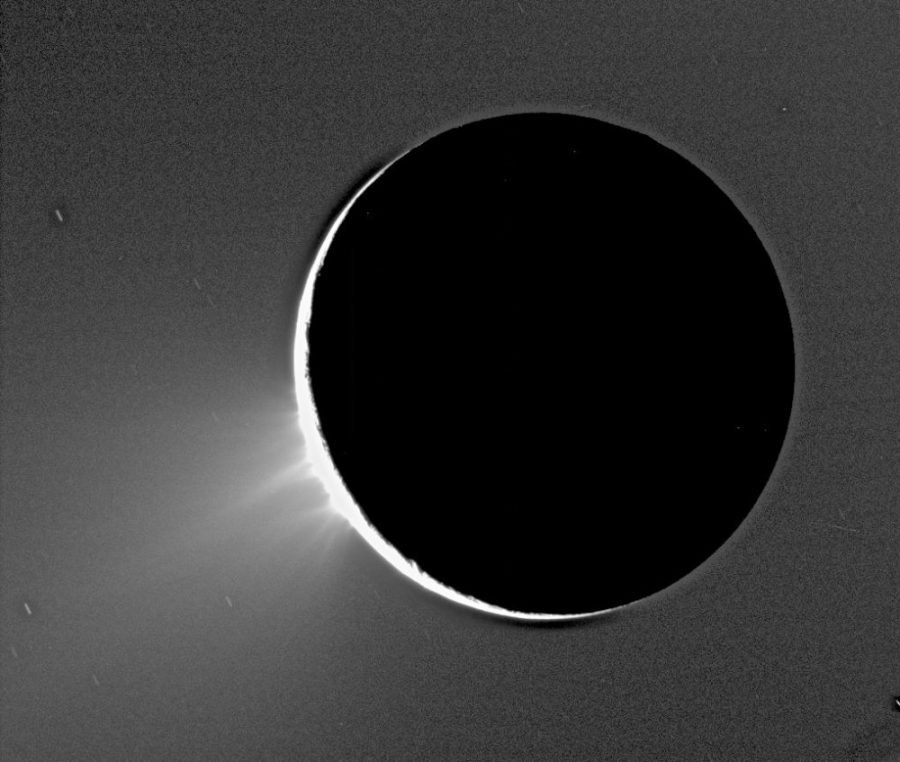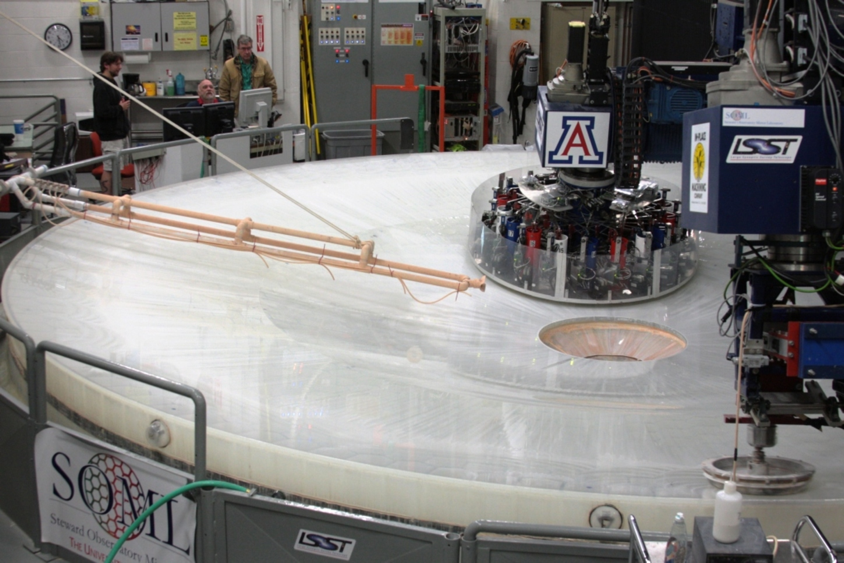A recent UA study proposed that Ahuna Mons, the sole inhabitant on the dwarf planet Ceres, may once have been joined by other cryovolcanoes. Ahuna Mons, the largest feature on Ceres, was recently discovered by the Dawn spacecraft in 2015 and is thought to be a cryovolcano.

Standing at four kilometers high and shaped like a cone, Ahuna Mons is certainly hard to miss.
“What motivated our work was just asking the question, why is there this one very prominent feature on Ceres? Imagine if there was only one volcano on all of Earth. That would be a pretty strange thing,” said Mike Sori, the lead investigator of the study and a postdoctoral researcher at the UA Lunar and Planetary Laboratory.
Sori and his team proposed that Ahuna Mons was not always alone on Ceres. Other cryovolcanoes once existed, but through a process known as viscous relaxation, are no longer visible to the eye.
Cryovolcanoes are similar to volcanoes on Earth, except for instead of having a molten rock magma core, they contain liquid water, Sori said. However, the fact that there is ice in objects in the solar system doesn’t necessarily mean the planet is going to be inhabitable any time soon.
“Water in its solid form is actually very common once you get to the outer solar system,” Sori said. “All of the solid bodies in the outer solar system are largely composed of ice, and by that I mean their entire volume.” However, the temperatures on these objects are so low the ice remains solid, unable to ever reach the surface in a liquid form, Sori adds.
The fact that Ahuna Mons may be a cryovolcano isn’t the only thing that makes it unique.
RELATED: Featured Science: Mirror lab builds cutting edge telescope parts
“Ahuna Mons’ surface appears to be really young,” said Ali Bramson, a co-author on the study and a graduate student in planetary sciences and geosciences. “Given that the solar system and most of the bodies in it are on the order of 4.5 billion years old, it would be very rare if cryovolcanism only really started happening very recently.”
In order to date objects in the solar system, scientists look at the number of craters on the object’s surface, Sori said. The more craters, the older the object is.
While Ceres only has a few craters, the idea that the dwarf planet is very young doesn’t make a lot of sense, scientifically. It would be unusual for an object to remain geologically dead for most of its history and then suddenly become geologically active in the past 100 million years, a geologically recent timeframe, Sori said.

The solution to this puzzle appears to lie in a process known as viscous relaxation.
Sori describes viscous relaxation as the idea that after a long period of time, topography will begin to flow, similar to squeezing honey out of a bottle and watching it shift into a flattened shape.
“We see this on Earth,” Sori said. “Glaciers on Earth are, by definition, perennial ice that flows over time.”
RELATED: OSIRIS-REx to search for Trojan Asteroids
If Ahuna Mons is a cryovolcano, then it’s possible other ice volcanoes once existed on Ceres and, through the process of viscous relaxation, have now been erased from our sight.
If this is true and more cryovolcanoes are discovered, the relationship between slopes and temperature can be used to make predictions about possible volcano distribution, Bramson said.
For example, a cryovolcano facing the pole will get less direct sunlight, causing it to flow less, Bramson said. Conversely, a cryovolcano facing the equator will be warmer and flow more, resulting in oddly-shaped volcanoes.
“It’s really cool to think that these possible ice volcanoes at different parts of the planets are going to be sort of asymmetric and that will tell us a lot about the possible ice content and history of cryovolcanism on Ceres,” Bramson said.
Despite its unique qualities, Ceres is not the only object in the solar system with proposed cryovolcanism. Some of the other bodies where ice volcanoes have been theorized to exist on are Titan, Europa and Pluto, Sori said.
And while cryovolcanoes might be cold, Sori said he thinks this will be a “very hot topic of research” over the following decades.
“On terrestrial planets, volcanism is incredibly important in shaping the geology,” Sori said. “Perhaps it’s the case that cryovolcanism is comparably important for all these outer solar system bodies.”
Follow Hannah Dahl on Twitter.









